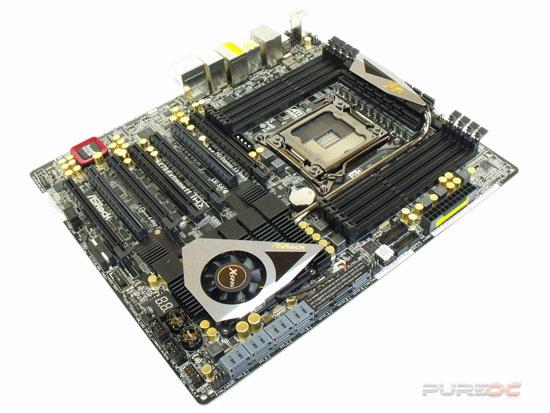PureOverclock has published a review on the ASRock X79 Extreme 11 motherboard

ASRock X79 Extreme 11 Review
The full array of Z77 motherboards has already been introduced throughout the industry and Ivy Bridge is now a mainstay for Intel. With all the hype and migration, many have forgotten about another viable, and arguably better, computing platform. Yes, the X79 platform is still alive and so are Sandy Bridge “E” processors. The Sandy Bridge “E” processors have more computing power over “vanilla” Sandy Bridge and Ivy bridge due to the increased L3 cache. With that said, Ivy Bridge “E” processors are due to arrive 4th quarter 2012. The Ivy Bridge “E” series will carry the same architecture with a die shrink. It also has more transistor density than it’s little brother version of Ivy Bridge did. The transistors are Intel’s new 3D Tri-Gate Transistors which operate more efficiently, and Ivy Bridge “E” still uses socket 2011. Until those arrive, the Sandy Bridge “E” are the top performers, and that is what we get to look at today.
In the past two years or so, ASRock has stepped up their game and are now a major player in the motherboard industry. In addition, ASRock has been dominant with the X79 platform, from the X79 Extreme 3 through the X79 Extreme 9 series. This includes their gamer/enthusiast Fatal1ty series motherboards. In our opinion, ASRock has one of the most comprehensive X79 lineups of all manufacturers, and now the ASRock X79 Extreme 11 has appeared to shake things up further. The Extreme 11 has seven PCIE 3.0 slots (using the PLX PEX 8747 chip), eight SATA III ports and eight USB 3.0 ports. This is on top of a boatload of other features as well. Needless to say, The Extreme 11 is surely built for the performance inclined user.
Enough with all the exposition… our mouths are watering and our tongue is hanging out, so let’s get the ASRock X79 Extreme 11 to the lab and launch it into orbit!

ASRock X79 Extreme 11 Review
